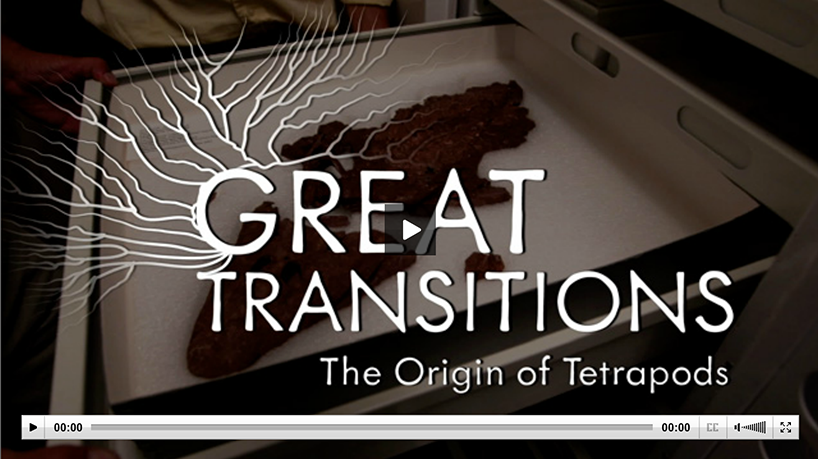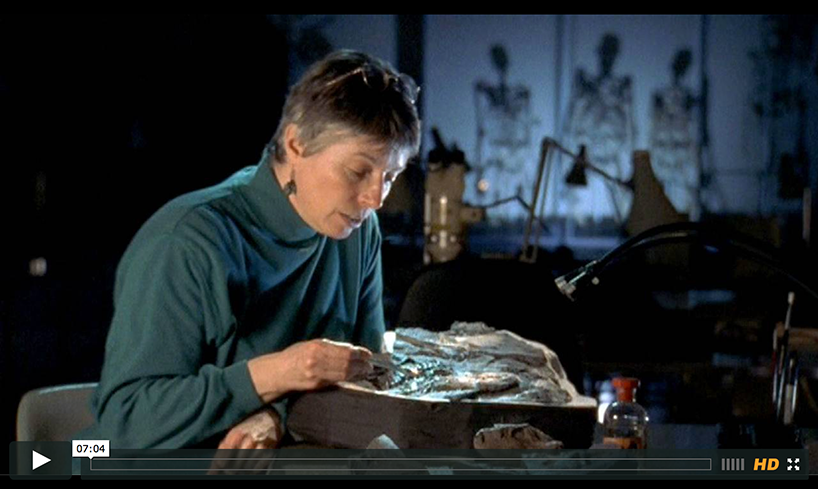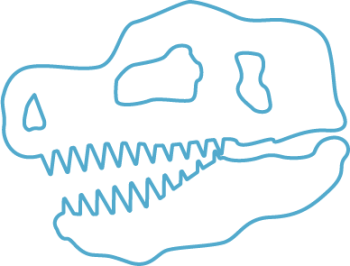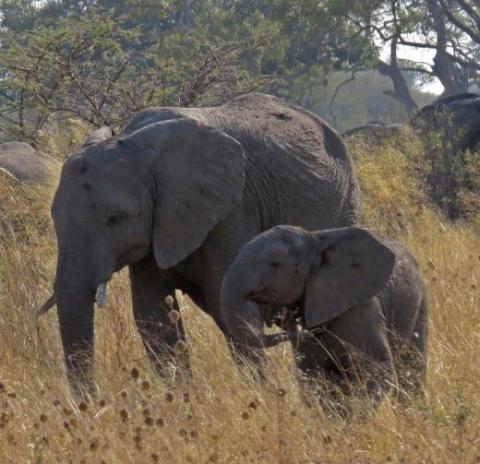A new study suggests that fish first swam in the shallows around the coasts of supercontinents before they diversified and conquered the world’s waters. More than 400 million years ago, ancient oceans were teeming with many fish that might seem alien in today’s seas. From the New York Times: "Where Did Fish First Evolve? The Answer May Be Shallow." A newly discovered fish fossil is challenging what we know about the evolution of jaws. The 420-million-year-old fossil, found by scientists in Yunnan, China, appears to have the kind of bony jaw associated with modern fish. This suggests that jaws as we now know them may have evolved much earlier than previously thought: A Little Fish, With Jaws to Come. The fins of fish and the limbs of land vertebrates are homologous structures, meaning they share genes and are formed by similar processes. The same gene even controls the formation of the very tip of a fin and the fingers and toes of four legged vertebrates.
An ancient tetrapod was the first vertebrate to walk on land. Here is an article about tetrapods.
Scientists now have a better understanding of the transition to land.
The genome of an ancient fish, the Coelacanth, is likely to shed light on the change from a lobe-finned fish into the first land-dwelling tetrapod. Scientists have decoded the genes of an ancient fish, the coelacanth.
Whales evolved from ancient land animals. Just fifty million years ago, ancestors of all whales and their relatives were small deer-like creatures.
Dinosaurs are a group of reptiles that dominated the land for over 140 million years. There were other ancient reptile groups that are not true dinosaurs. Learn about true dinosaurs and what made them so successful. Dinosaur fossils have been found on just about all continents. Watch our Shape of Life video: Kristi Curry-Rogers and how dinosaurs grow. Here is a brief history of the age of dinosaurs. Here’s an article about why they were so successful.
Along with mammals and birds, snakes diversified after the dinosaurs went extinct. Snakes have a very diversified diet and there were a lot of new animals around to eat.
Modern birds are now considered living dinosaurs. Here is an article about how birds could have evolved from dinosaur ancestors.
Turtles are indeed reptiles, but the group lacks a feature common to most modern reptiles. A newly discovered fossil is helping solve the mystery.
From skeletons to teeth, early human fossils have been found of more than six thousand individuals. This Smithsonian site “What Does it Mean to be Human” is well worth a visit. Here is their graphic of the human family tree.
Scientists have hypothesized that a doubling or quadrupling of genes occurred in vertebrate evolution. Decoding the genome of the modern Amphioxus, showed that vertebrate evolution was indeed characterized by the quadrupling of the genes of primitive ancestors. Watch the Shape of Life video on vertebrate evolution.
Here is a virtual lab about evolution. Lizard evolution is explored in the Lizard Evolution Virtual Lab.
























